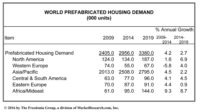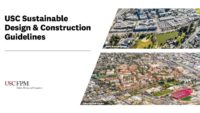Buildings are the largest energy-consuming sector in the American economy. Commercial and industrial structures require nearly $400 billion each year to power¹, and lighting alone accounts for 17 percent of all energy use in U.S. commercial properties². This energy demand has a significant impact on both the environment and a building owner’s bottom line.
To mitigate these growing costs and the effects on our planet, building owners are incorporating and following more stringent energy codes, leveraging the use of more eco-friendly and energy-saving elements into building projects.
One method building owners use is harnessing natural light through high-performance skylights. Once implemented, building owners can reap numerous benefits and help save as much as one-third of total energy costs³. Using high-performance skylight can also help owners achieve LEED v4 points and meet new energy code requirements.
Eco-friendly Benefits
Beside energy savings, there are many other eco-friendly benefits of incorporating daylighting into your new project or retrofitting an existing building.
- Human effect. Leveraging daylighting in lieu of incandescent lights has been shown to improve the overall attitude, satisfaction and well-being of building occupants. Specifically, daylighting has shown to increase worker productivity and reduce absenteeism in office buildings; improve student educational performance in K-12 schools; and improve patient recovery times in hospitals. Also, exposure to daylight has been shown to improve a person’s overall health and help to regulate their circadian rhythm.
- Improved sales. In retail settings, studies have shown that daylight areas generate more shopper traffic, resulting in increased retail sales.
- Quality of light. No electric light can match the quality of natural daylight. At nearly a color rendering index of 100, daylight areas can reveal the “true” colors of various items without the disturbance of incandescent light flicker. High CRI lights are desirable in color-critical applications such as neonatal care, landscape architecture, architecture and graphic design.
- Sustainability. By simply turning off the lights during the day, facilities can take a “greener” approach to the day-to-day operations and reap the energy-saving benefits of daylighting.
High-performance Skylights
When selecting high-performance skylights, the following should be considered.
- Is daylighting an applicable possibility for the intended space? Determine if daylighting is appropriate for the space as each space within a building has different lighting needs. Ideal locations for implementing daylighting technologies are spaces that are continually utilized or occupied and where turning off the lights has the greatest impact on increased energy efficiencies. Low on the daylighting priority list are spaces that are used for very specific functions where excessively lighting the area may be detrimental to the tasks at hand or contain light sensitive materials.
- What is the appropriate quantity of light needed for space? Industrial, manufacturing, office, school and retail spaces have different light quantity requirements. Industrial spaces ideally need between 20 and 30 foot candles (FCs) of light where daylighting units cover approximately 2 to 3 percent of the available roof space. Manufacturing facilities ideally need between 40 and 60 FCs of light where daylighting units cover approximately 3to 4 percent of the roof area. Offices and schools ideally need between 45 and 70 FCs of light where daylighting units cover approximately 4 to 5 percent of the roof area. Lastly, retail spaces ideally need between 65 and 100 FCs of light where daylighting units cover approximately 4to 5 of the roof area. These are recommended approximations, as business owners should determine their own needs based on usage.
- Which skylight is appropriate for my applications? Weather conditions play a big part in selecting the right skylight for your structure. Building owners and designers should consider regional weather conditions, insulating needs (Single, double or triple glazing), hail ratings (Class 1, 2, 3 or 4), hurricane potential (High Velocity Hurricane Zone), wind pressure and building insurers (Factory Mutual) to ensure the design team selects the right high-performance skylight for the project location.
- What’s the desired quality of light for tasks? Examine the space for implementation and determine the desired light levels (FCs) for the space, then work with your architect to create a distribution plan of daylight to reduce uncomfortably high brightness ratios and to ensure adequate daylight to all occupants in the space. Examine other control devices to help control direct sunlight when necessary and utilize passive lighting strategies when appropriate.
- Are there Building Codes to meet? Depending on your location and if this is new construction or significant renovation, the following building codes will dictate daylighting implementation.
- ASHRAE 90.1 – 2010 & 2013: Mandate for daylighting and commissioned lighting controls for certain building types (5,000 square feet with 15 feet plus ceiling and 0.5 watts/ square feet connected lighting load). Implementation began in 2010.
- IECC 2012 – EC173: Mandate for daylighting in certain building types (10,000 square feet with 15 feet plus ceiling and 0.5 watts/square feet connected lighting load). Increase from four to five percent for daylighting with higher VLT skylights and lighting controls. Implementation began in 2012.
- IGCC: ICC’s International Green Construction Code. Merging of ASHRAE 189.1, ICC Standards & LEED. Mandate for daylighting in certain building types like ASHRAE and IECC.
- California Title 24 and Green Building Mandate: Rules for height go away and any building over 8,000 square feet will be required to daylight to get permits.
- Always ask about the Warranty. As with any roofing project, new construction or retrofit, contractors should choose a single-source manufacturer, like Firestone Building Products, that provides a long-term reliable solution with both product design and warranty. Always understand warranty offerings and ensure you work with a manufacturer that will provide expert service for each project and through the duration of the roof’s life. While no skylight is immune to degradation over time, choosing a quality product from a trusted manufacturer helps to ensure solid performance for years to come.
References
- U.S. Department of Energy Office of Energy Efficiency and Renewable Energy
- U.S. Energy Information Administration Commercial Buildings Energy Consumption Survey
- National Institute of Building Science
- United States Environmental Protection Agency








Report Abusive Comment